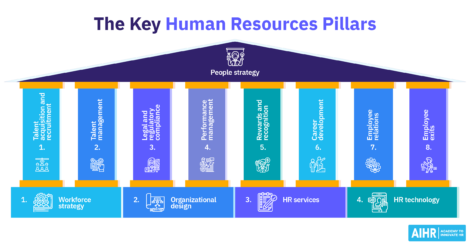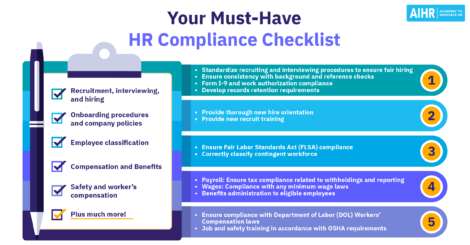Aging Workforce Challenges: Trends, Statistics and Impact

We talk an awful lot about Millennials and Generation Z. How to attract them, hire them, and keep them in our company. Many studies have been done, experts have been consulted, all to figure out the magic formula to keep these younger generations happy and engaged.
But what about the aging workforce and its challenges?
What’s in?
Aging workforce statistics
What is the aging workforce?
Aging workforce challenges & solutions
The impact of the aging workforce
FAQ
Aging workforce statistics
First off, a couple of aging workforce statistics to give you an idea about the extent of the problem. In the US alone, 10 000 baby boomers turn 65 every day. According to an article by Arlene S. Hirsch, M.A., LCPC, for SHRM, this is something that started in 2011 and will continue until 2030.
Since the average retirement age of a baby boomer lies somewhere between 61 and 65, it’s not hard to see that this so-called silver tsunami is going to create some serious challenges for HR; the main one being, how are they going to fill the talent gap that’s left between the number of baby boomers that retires and the number of younger workers with the right skills to replace them?
When it comes to aging workforce statistics in Europe, things aren’t much better.
According to data from the European Labor Force Survey, workers aged 55+ currently make up for 16% of the total workforce in the European Union. In countries like Germany, Finland, and Sweden (among others) the number of mature workers is already close to 1 in five. As a comparison, for every 10 Generation Z members, there are 12 people aged 65 or older in the EU.
What is the aging workforce?
The aging workforce is – as its name suggests – the part of working individuals that has reached a certain age and beyond. It used to be defined as those who are 40 years or older.
Since we’re dealing with huge numbers of baby boomers turning 65 on a daily basis, however, 40 seems a bit young to be speaking about an ‘aging workforce’ (it would also mean that an even bigger percentage of the working population qualifies).
So let’s take 55 and older as our measure. In which case 1 out of 4 workers in the US will qualify as part of the aging workforce as early as in 2020…
There are various reasons why the workforce is getting older. Jeffrey Tamburo lists 4 of them:
- Financial: A lack of a proper pension plan or retirement savings forces a lot of people over 55 to continue to work. Simply because they can’t afford to retire. The fallout of the financial crisis of 2008 left many of them with debts and/or insufficient income from their pension.
- People live longer and are healthier: Despite what you may think, the life expectancy for both men and women in the developed world generally increases.
- Talent shortage: The generation that came immediately after the Boomers – the so-called Baby Bust, those born between 1965 and 1976 – is a lot smaller. As a result, there aren’t enough people to take over the jobs of retiring Baby Boomers. This means the latter are often asked to stay.
- Enjoy work and productivity: Believe it or not, many people enjoy the social aspects of having a job and they like to feel productive. It seems that where Millennials are looking for ‘purpose’ in their jobs, Baby Boomers want to feel productive, not that different after all…
In today’s’ article, we take a closer look at aging workforce challenges. What are the main trends and – most importantly – what are the solutions for HR?
5 Aging Workforce Challenges and Their Solutions
There is a wide range of challenges for HR when it comes to the aging workforce. Let’s look at a few main issues:
1. Bias
A big one to start with. Older workers are less flexible, less motivated, too slow, they take more sick days, etc. These are just a few of the many stereotypes people – older workers included – have about senior workers. As such, bias is one of the toughest aging workforce challenges.
Now, how to beat these misconceptions?
Germany’s Daimler – the company who owns Mercedes – has taken it upon themselves to challenge stereotypes about aging by developing an exhibition. Visitors of the exhibition can either enter the exhibition through a ‘young’ or an ‘old door’.
Once inside, they can take tests to measure things like their balance, their ability to work in a team and their memory. The Reuters correspondent who wrote an article about Daimler’s initiative, real age 45, turned out to have a biological age of 36 and 119 years of life experience.
A pretty cool way to smash bias about older workers, right?
Young or old, which door would you choose?
2. Absenteeism
Bias or not, absenteeism is an aging workforce trend. Whether it is because their health isn’t as good as it once used to be or because they have indeed lost their motivation doesn’t matter, it still costs the company money. But before jumping to conclusions about the reasons for the higher absenteeism rates among your older employees, try to find out the real reason.
How?
Just ask them! It may be something relatively simple that can easily be solved – and bring back your older workers happier than they’ve been in a while!
An aging workforce intervention: a case study
This is exactly what happened in a big European postal company. The absenteeism among the organization’s older workers was a real issue. This is not uncommon in this part of the population and the predominantly long-term absence indicated chronical, physical issues.
The company assumed this had to do with the workload. To conquer this trend they decided to ease the work for the older population of their workforce by introducing extra holidays for these workers.
It turned out that this measure didn’t change much. It was costly to implement but absence for the aging workforce remained at similar, high levels.
When they finally asked their older employees what the problem was, they found out it had nothing to do with wanting more holidays.
It was about tedious, manual processes that caused chronic, physical difficulties. By automating these processes, the company managed to reduce the absenteeism among its older workers significantly.
Ask your senior employees why they’re absent
rather than making assumptions.
3. Postpone retirement
This is another popular aging workforce trend. But before you approach every employee who’s above a certain age and ask them to delay their retirement, you may want to sit down and think again. Think about it the same way you think about your top talent, your high potentials.
Because when it comes to your aging workforce, you want to keep your top talent too. After all, they are the ones who will have to (co) train the younger employees to make sure they’ve got what it takes when eventually retirement does come.
So, who do you want to keep?
Once you’ve got that figured out, it’s time to think about how you are going to get them to stay. The options here are endless and depend on the industry you’re in. In the above-mentioned example of Daimler, HR encouraged employees – and management – to discuss the age structure of their teams and ways to stimulate cooperation between young and old.
Some of the ideas that came out of this: a system that makes it easier for older workers to swap shifts, hiring retired workers for short-term projects and testing ergonomic tools to reduce physical strain.
Of course, there are heaps of other things you can do (up the salary, extra holidays, more health benefits). But the main thing remains the same: ask your people about their ideas and involve them – as well as the rest of the employees and management – in the process.
Asking experienced employees to delay their retirement
is a popular aging workforce trend right now.
4. Succession
This is why you want to choose wisely who you ask to postpone their retirement. One of the most important tasks – and perhaps a future trend – of the aging workforce is to transfer their knowledge and experience to their younger colleagues. So this is yet another thing to think about because even if they’ve delayed their retirement (for now) time is still ticking for your older workers.
It’s starting to get a little repetitive but ask your employees (young and old) about their ideas.
Sticking with the German examples, tech company SAP has a so-called mature talents program. The idea here is for experienced employees and younger workers to benefit from a two-way mentoring program.
Apart from your older workers mentoring the younger ones, it’s good to train the latter to reduce the skill gap via other ways too. Use a personalized learning & development program for example.
Carefully think about the role you want your aging
workforce to play in your succession planning.
5. Attract & retain younger employees
In the end, this is where it all starts. No matter how long your older workers stay or how much you reduce your absenteeism, eventually they will retire. Which means you’ll need to have a new generation ready to take off where their predecessors left off.
And so things have come full circle. We’re back to Millennials and Generation Z and how to attract, hire and keep them. But that’s something for another article.
Eventually, younger generations will have to take over.
The Impact of the Aging Workforce
Aging workforce challenges are something every company will have to deal with. There simply aren’t enough younger workers to make up for the huge (skill) gap the baby boomers will leave behind. But rather than looking at the aging workforce as a problem, think of it as the great opportunity it actually presents. For all of the involved.
By working together with your employees, both young and old, you can find fitting, innovative solutions for every aging workforce issue. The use of technology and employee training, for instance, can be very helpful in this regard. And when you finally find the right solution, you’ll see the tremendous added value that your aging workforce has for your entire organization.
FAQ
The aging workforce is – as its name suggests – the part of working individuals that have reached a certain age and beyond. This is often defined as those who are 40 years or older.
The main challenges when it comes to the aging workforce include bias, absenteeism, trying to get (some of) them to postpone their retirement, and succession.
Some of the ways to address aging workforce challenges can be intergenerational workshops, in-company mentor and/or coaching initiatives, and team building activities.
Weekly update
Stay up-to-date with the latest news, trends, and resources in HR
Learn more
Related articles
Are you ready for the future of HR?
Learn modern and relevant HR skills, online















